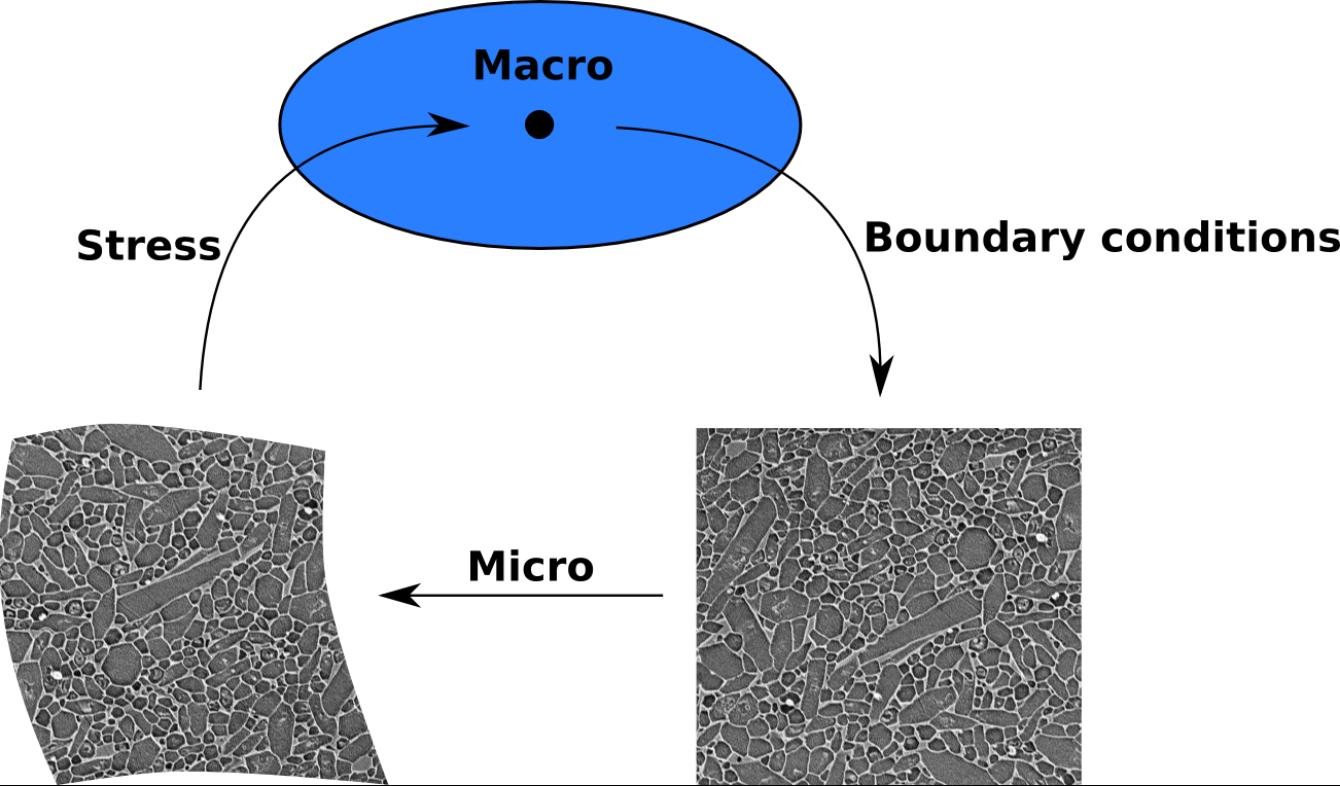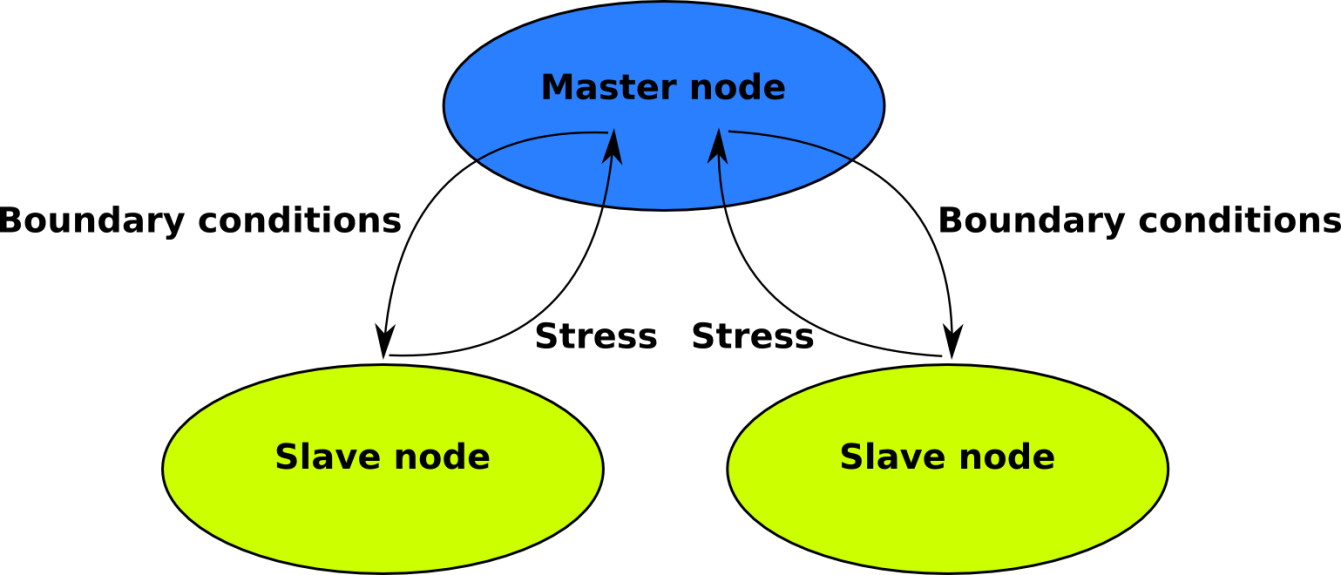In this multi-scale approach, both micro and macro scales are simulated with the finite element method, via a two way coupling: the gradient of deformation is transferred to the lower scale and the average stress is returned back to the macro FE model (see figure 1). We apply this scheme to model damage evolution in ceramic or concrete materials. The bulk material response at macroscale is considered elastic until the stress reaches a critical value. Then, the damage evolution model is computed by calling a representative volume element that simulates damage evolution at the microstructural level explicitly. For this scale, nonlinearity originates from two physical phenomena. Cracks are the first phenomenon which dissipate energy by creating new surfaces. The other one is the frictional contact which plays a major role in energy dissipation when two sides of the crack start to slide against each other. With this approach the influence of mircrostructural and material parameters of the lower scale can be studied without adhoc assumptions. In this way, we bridge the speed of macro scale with the accuracy of the microscale in our simulations. A parallel strategy is utilized to speed up the run time. Therefore, a master/slave paradigm with MPI is implemented to parallelize the multi-scale FE2 analysis (see figure 2).
 |
|
Fig. 1: Interaction between macroscopic and microscopic levels
|
 |
| Fig. 2: MPI graph for master/slave algorithm |
